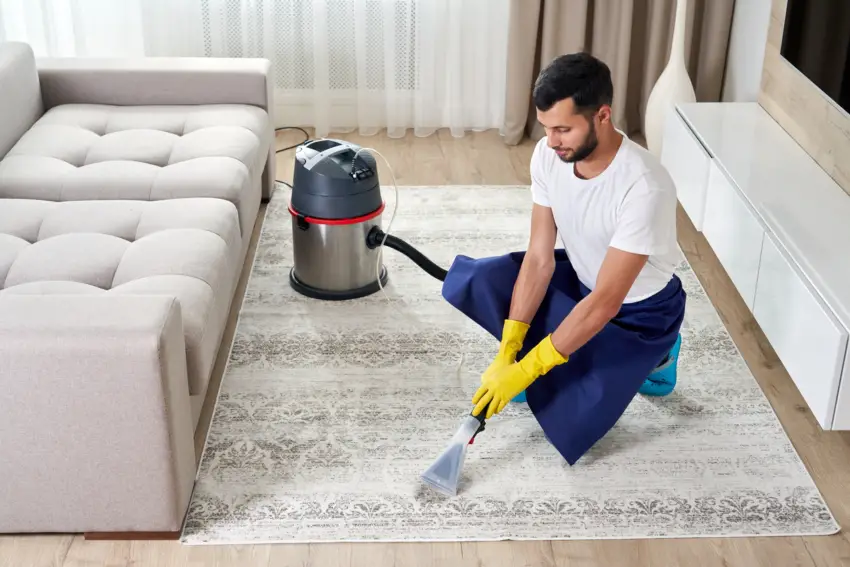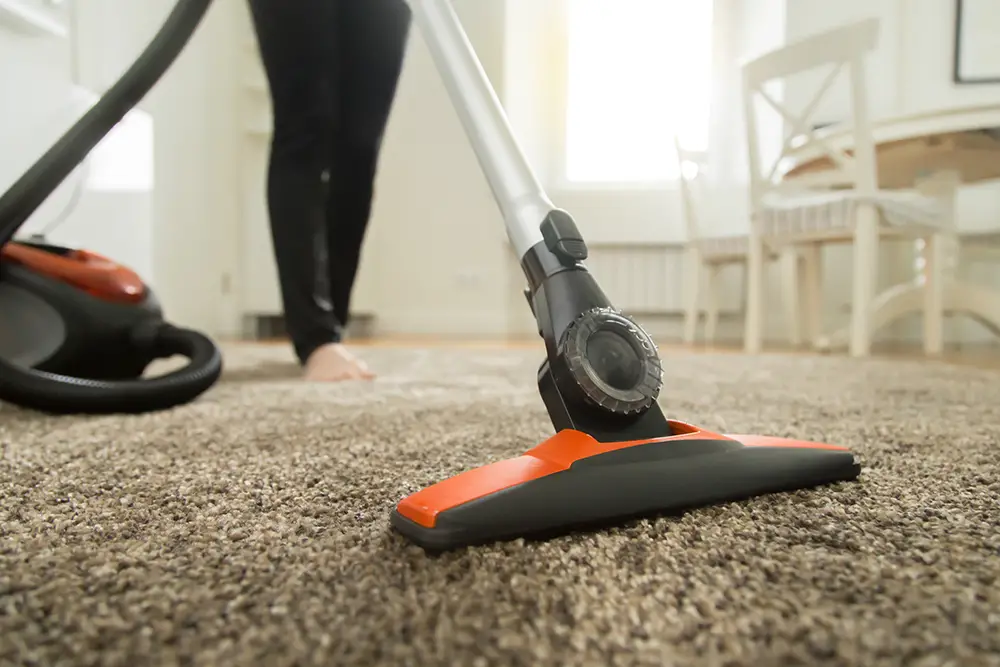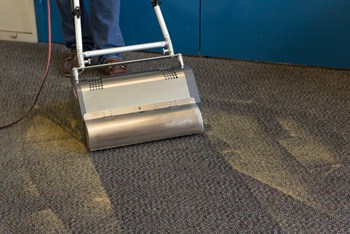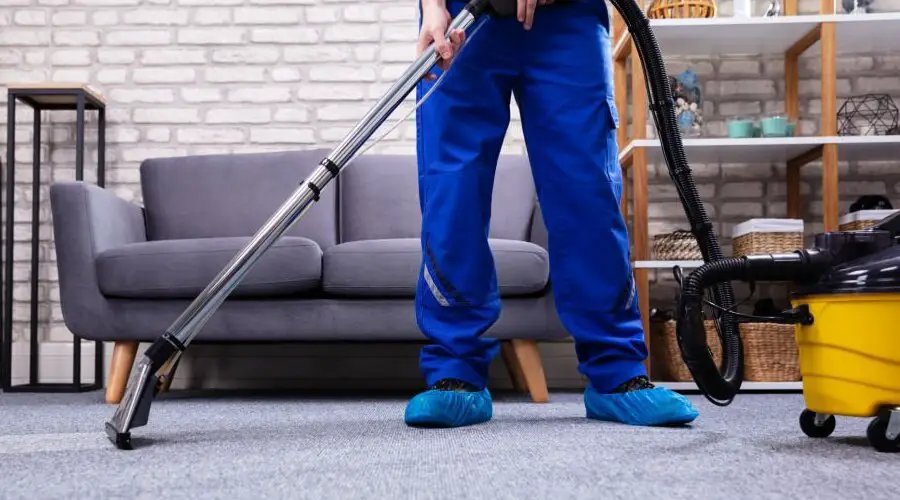When it comes to maintaining a clean and inviting living space, the cleanliness of your carpets plays a pivotal role. Over time, carpets can accumulate dirt, dust, allergens, and stains, detracting from the overall aesthetics of your home and potentially impacting indoor air quality.
Regular vacuuming is essential, but to truly restore the appearance and hygiene of your carpets, utilizing various carpet cleaning techniques is necessary.
This guide will explore 7 effective carpet cleaning techniques, offering insights into how each method can tackle different types of dirt and stains, ultimately ensuring your carpets remain in pristine condition.
From traditional approaches to innovative solutions, understanding these carpet cleaning techniques will empower you to maintain your carpets effectively, enhancing the comfort and beauty of your home environment.
1. Hot Water Extraction Cleaning

Hot Water Extraction Cleaning, commonly referred to as steam cleaning, is a powerful carpet cleaning technique that employs high-pressure hot water to deeply penetrate carpet fibers.
This method involves a process where hot water, often heated to a high temperature, is injected into the carpet at high pressure. The force of the water agitates and loosens the embedded dirt, dust, and debris in the carpet fibers, making them easily removable.
After the application of hot water, a high-power vacuum is immediately used to extract the now dirty water, along with the dislodged soil and grime, out of the carpet.
This extraction not only removes the dirt but also ensures that the carpet does not remain excessively damp – a vital factor in preventing the growth of mold and mildew.
The efficacy of hot water extraction lies in its ability to deeply cleanse the carpet, removing more than just surface-level dirt.
It is particularly effective against stubborn stains, pet dander, and allergens, making it a preferred choice for households aiming for a thorough cleaning.
Another advantage of this method is its minimal reliance on cleaning chemicals.
While certain situations may call for pretreatment solutions or mild detergents, the primary cleaning action is performed by the hot water itself, making this technique a safer, more environmentally friendly option for homes and commercial spaces alike.
The result is not just a cleaner carpet but one that contributes to a healthier indoor environment, free from harsh chemical residues.
2. Dry Cleaning

Contrasting with the hot water extraction method, Dry Cleaning of carpets involves a unique approach utilizing a special absorbent compound.
This cleaning powder, often made up of small amounts of water, solvents, and detergents, is designed to dissolve and attract dirt, oils, and other materials embedded in the carpet fibers.
The process begins with the thorough distribution of this cleaning compound across the carpet surface, where it is then brushed or scrubbed deep into the carpet using a motorized machine with rotating brushes.
This action allows the compound to bind to dirt particles, breaking them down and detaching them from the fibers.
After a short dwell time, which allows the compound to fully attract and encapsulate the dirt, a high-power vacuum cleaner is used to remove the compound from the carpet along with the attached dirt.
One of the hallmarks of the dry cleaning method is its rapid drying time. Since the process uses minimal moisture, carpets can be dry and ready for use in as little as 20 to 30 minutes after cleaning.
This method is particularly beneficial in commercial settings where downtime can be disruptive to operations or in residential areas where quick drying is desired to resume daily activities without delay.
Additionally, the dry cleaning method is effective in maintaining the appearance and extending the lifespan of carpets that are not suited for wet cleaning methods, making it a versatile option for various carpet types and settings.
3. Carpet Shampooing

Contrasting the dry cleaning method, Carpet Shampooing is an older, yet still popular technique for deep cleaning carpets. This method involves the application of a foamy chemical solution to the carpet, which is typically achieved through the use of a specialized shampooing machine.
The machine has rotating brushes designed to vigorously work the shampoo into the carpet fibers, ensuring thorough coverage and penetration.
The aim is to loosen the dirt, dust, and debris entrenched within the carpet.
The shampoo solution itself is formulated to capture dirt particles and suspend them in the foam. Once applied, the solution must be allowed to dry to a certain extent.
As it dries, the foam along with the encapsulated dirt particles, forms a brittle residue. Following the drying period, a high-powered vacuum cleaner is employed to remove the residue from the carpet.
This extraction process not only removes the cleaning solution but also the dirt and impurities from the carpet fibers.
One of the main benefits of carpet shampooing is its effectiveness in removing deeply ingrained dirt that other methods might not tackle as effectively.
However, it’s crucial to mention that this method has a longer drying time compared to methods like dry cleaning.
Carpets may require several hours to a full day to dry completely before they can be walked on again, which could be considered a disadvantage in environments where quicker drying times are preferred.
Additionally, if not executed correctly, there is a risk of leaving behind soap residue, which can attract more dirt over time or lead to carpet degradation.
Despite these drawbacks, carpet shampooing remains a viable option for those seeking a deep clean for their carpets, particularly in less trafficked areas where drying time is less of a concern.
4. Encapsulation

Encapsulation technology utilizes advanced synthetic detergents that, upon drying, crystallize into a powder form. This innovative approach is designed for efficient dirt removal from carpets without the extensive drying times associated with traditional shampooing methods.
When the encapsulating solution is applied to the carpet, it begins to work by breaking down the dirt and grime trapped within the carpet fibers.
As the solution dries, it transforms into crystals that encapsulate or “trap” the dirt particles. This transformation is crucial as it prevents the dirt from reattaching to the carpet fibers, making it easier to be vacuumed away.
The encapsulation process not only ensures a thorough cleaning but also contributes to the carpet’s long-term maintenance.
Since the encapsulated dirt particles are removed through regular vacuuming, this method effectively delays the re-soiling of the carpet, thus extending its clean appearance over time.
Furthermore, the use of low-moisture synthetic detergents minimizes the risk of mold and mildew growth, a common issue with wet cleaning methods.
Encapsulation is particularly beneficial for commercial settings where carpets receive high foot traffic and require quick turnarounds, offering an effective cleaning solution that allows for almost immediate use of the space.
5. Bonnet Cleaning

Bonnet cleaning, primarily a surface-level cleaning technique, involves the use of a motorized machine equipped with a spinning pad that has been immersed in a cleaning solution designed to absorb dirt from the carpet’s surface.
This method, often chosen for its quick drying time and efficiency, is particularly suited for high-traffic areas needing regular maintenance while minimally disrupting the flow of activity.
The spinning pad works by agitating the surface of the carpet, thereby loosening the dirt, which is then absorbed into the pad.
Although bonnet cleaning is effective for quick touch-ups and surface cleanliness, it is important to note that it does not provide a deep clean, as it primarily addresses the upper layer of the carpeting.
Regular maintenance through bonnet cleaning can help preserve the appearance of the carpet, but it should be complemented with periodic deep cleaning methods to ensure a comprehensive clean.
This cleaning technique is favored in commercial environments, such as hotels and businesses, where rapid cleaning and drying are paramount to maintain appearances without significantly disrupting operations.
6. Foam Encapsulation

Foam encapsulation cleaning technology utilizes a synthetic detergent as a base that crystallizes into powder form when it dries. During the cleaning process, the applied foam encapsulates the dirt particles in the carpet fibers upon application.
As the foam dries, it transforms into a powdery substance, encapsulating the dirt within it. This transformation allows for the encapsulated dirt to be easily vacuumed away, leaving the carpet fibers clean, refreshed, and minimally wet.
Unlike traditional wet cleaning methods, this technique significantly reduces the likelihood of leaving behind a sticky residue that can attract more dirt over time, leading to cleaner carpets for longer periods.
Foam encapsulation not only offers a deeper clean than surface-level techniques like bonnet cleaning but also promotes environmental sustainability by using less water and producing fewer chemical residues.
This method is particularly effective for commercial carpets that suffer from heavy foot traffic and need a balance between deep cleanliness and quick drying times to avoid business disruptions.
7. Dry Compound Cleaning

Dry compound cleaning stands out as a highly efficient, low-moisture carpet cleaning technique, particularly valued for its rapid drying time and effectiveness.
This method involves the distribution of a biodegradable cleaning compound over the surface of the carpet. The compound itself is made up of a mixture that can easily absorb dirt, oils, and various substances that find their way into the carpet fibers.
Once the compound is evenly spread across the carpet, a motorized brush machine is employed to meticulously scrub the compound deep into the fibers.
The mechanical action of the brush not only ensures that the compound reaches deep into the carpet but also agitates the fibers to release trapped dirt and debris.
The compound acts like tiny sponges, effectively absorbing and isolating the dirt from the fibers. After a sufficient settling period, which allows the compound to fully absorb the soil, the carpet is thoroughly vacuumed.
This final vacuuming step collects the compound along with the encapsulated dirt, leaving the carpet clean, dry, and immediately ready for use.
One of the major advantages of dry compound cleaning is its ability to clean carpets without the use of water, significantly reducing the risk of mold or mildew growth beneath the carpet surface.
It’s particularly beneficial for commercial spaces where minimal disruption to daily operations is crucial, as the area can be used almost immediately after cleaning.
Related Topics:
Conclusion
So, the maintenance of clean and vibrant carpets is integral to the overall ambiance and hygiene of any living space or commercial area.
Employing a variety of carpet cleaning techniques, as outlined, ranging from Hot Water Extraction and Dry Cleaning to more specialized methods like Foam Encapsulation and Dry Compound Cleaning, ensures that individuals can address the specific needs and challenges associated with their carpets.
Each method offers unique benefits, whether it be in terms of depth of cleaning, speed of drying, environmental impact, or suitability for different types of carpet fibers.
Understanding these options can significantly aid in selecting the most effective cleaning technique to prolong the life of carpets and maintain a healthy, aesthetically pleasing environment.
Above all, regular maintenance and timely intervention with the appropriate cleaning method can preserve the beauty and functionality of carpets, contributing to an inviting and comfortable space for all.
FAQs
How often should carpets be professionally cleaned?
Professional cleaning of carpets is generally recommended every 12 to 18 months. However, this can vary depending on the level of foot traffic, the presence of pets, and children, or specific environmental conditions that may necessitate more frequent cleanings.
Can all types of carpets be cleaned with the Hot Water Extraction method?
While Hot Water Extraction is versatile and effective for many carpet types, some delicate fabrics may not fare well with the high temperatures and moisture. It’s essential to consult with a professional cleaner or refer to the carpet manufacturer’s guidelines to avoid damage.
Is Dry Compound Cleaning environmentally friendly?
Dry Compound Cleaning involves the use of biodegradable materials that are typically considered environmentally friendly. It uses minimal water, reducing wastewater runoff. However, it’s crucial to select products that are specifically designed to be low in volatile organic compounds (VOCs) to ensure a greener cleaning process.


1 thought on “Spotless Solutions: 7 Carpet Cleaning Techniques”